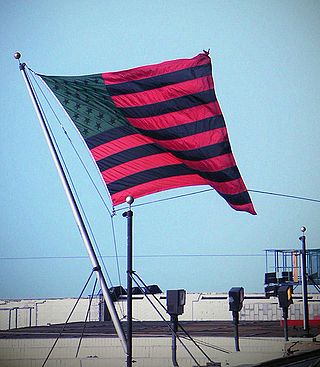Work
Artworks

Much of Levine's work is explicitly appropriated from recognizable modernist artworks by artists such as Walker Evans, Edgar Degas, Marcel Duchamp, and Constantin Brâncuși. Appropriation art gained notoriety in the late 1970s, although it can be traced to early modernist works, specifically those using collage. Other appropriation artists such as Louise Lawler, Vikky Alexander, Barbara Kruger, and Mike Bidlo came into prominence in New York’s East Village in the 1980s. The importance of appropriation art in contemporary culture lies in its ability to fuse broad cultural images as a whole and direct them towards narrower contexts of interpretation. When coming under criticism with her appropriated works, most notably, Walker Evans' depression-era images, the role of appropriation within Levine's work also helped her to link the 'rarefied art object' and 'mass-produced' works to the extent that she perceived her appropriated works to be 'no less products of mass culture than the images of Elvis or Liz Taylor appropriated and reproduced by Andy Warhol.' [7]
In 1977, Levine participated in the exhibition Pictures at Artists Space in New York, curated by Douglas Crimp. [8] Other artists in the exhibition included Robert Longo, Troy Brauntuch, Jack Goldstein, and Philip Smith. [8] Crimp's term, "Pictures Generation," was later used to describe the generation of artists in the late 1970s and early 1980s who were moving away from minimalism and towards picture-making. [8]

Levine is best known for her series of photographs, After Walker Evans, which was shown at her 1981 solo exhibition at Metro Pictures Gallery in New York. [9] The works consist of well-known Walker Evans photographs, rephotographed by Levine from an Evans exhibition catalogue and then presented as Levine's own artwork without manipulation of the images. [9] The Evans photographs — made famous by his book project Let Us Now Praise Famous Men , with writings by James Agee — are widely considered to be the quintessential photographic record of rural American poor during the Great Depression. [10] The Estate of Walker Evans saw the series as a copyright infringement, and acquired Levine's works to prohibit their sale. [11] Levine later donated the whole series to the estate. All of it is now owned by the Metropolitan Museum of Art, New York. [12] Levine's appropriation of Evans's images has since become a hallmark of the postmodern movement. [13] By rephotographing and re-feminizing this series, Levine makes the images more transparent in their message, rather than focusing on authorship. Including herself in this series can be seen as the artist's gesture of solidarity with the subject. [14]
Levine has rephotographed a number of works by other artists, including Eliot Porter and Edward Weston. [6] Additional examples of Levine's works include photographs of Van Gogh paintings from a book of his work; watercolor paintings based directly on work by Fernand Léger; pieces of plywood with their knotholes painted bright solid colors; and her 1991 sculpture Fountain, a bronze urinal modeled after Marcel Duchamp's 1917 work, Fountain. This work in particular brings attention to the idea of originality and Levine's ability to remake artworks as not quite themselves. In the case of Fountain, Levine purposefully chooses a polished bronze finish to evoke works by Brancusi. By doing so, Levine likens the two artists' works, and raises the question of originality and the copy. [15] Levine also appropriated Duchamp's The Bride Stripped Bare By Her Bachelors, Even, through the creation of her 1989 series, The Bachelors (After Marcel Duchamp). [16] The series comprises six frosted-glass sculptures, each of which follows the design of a different malic-mold found in Duchamp's original. [16] The sculptures are displayed in individual glass vitrines, separate from one another so as to upset the structure of power depicted by Duchamp originally, allowing Levine to make a greater social commentary through her series. [16] [17]
In 1993, Levine created cast glass copies of sculptures by Constantin Brâncuși, held in the permanent collection of the Philadelphia Museum of Art, for an exhibition titled Museum Studies. [18] In 2009, the Metropolitan Museum of Art held an exhibition titled The Pictures Generation , which featured Levine's works. [19] [20] In November 2011, the Whitney Museum of American Art in New York mounted a survey exhibition of Levine's career titled Mayhem. [21] Sherrie Levine: Mayhem, mounted at the Whitney Museum of Art from November 2011 through January 2012, was a meticulously organized installation, ranging from Levine's best-known photographs to works including her more recent Crystal Skull series (2010). [22] During the winter of 2016, Levine exhibited new work of monochrome paintings paired with refrigerators. [23] In 2016-2017 she exhibited at Neues Museum Nürnberg: After All. [24]
In 2010, the artist created a series of eighteen monochromes titled "Gray and Blue Monochromes" based on Alfred Stieglitz's Equivalents (a series of abstract photographs of the sky). [25]
Feminism

Levine's art is most often associated with 1980's theoretical feminism. She was showcased in the exhibit Difference: On Representation and Sexuality in 1984 along with artists such as Barbara Kruger, Jeff Wall, and Mary Kelly. This exhibit focused on gender distortions rather than differences, and the construct of sexuality. Three paintings from Levine's series After Ernst Ludwig Kirchner were included in this exhibit. Her appropriations of male artists' famous works combined with her intentional re-feminizing brings attention to the "difference problem" which this exhibit was focused on. [26] Levine has noted her distaste for the voyeuristic quality of media culture, aligning with Laura Mulvey's analysis of the male gaze. Her work contends with the fact that, in her words, "the art world is so much an arena for the celebration of male desire." [2]







